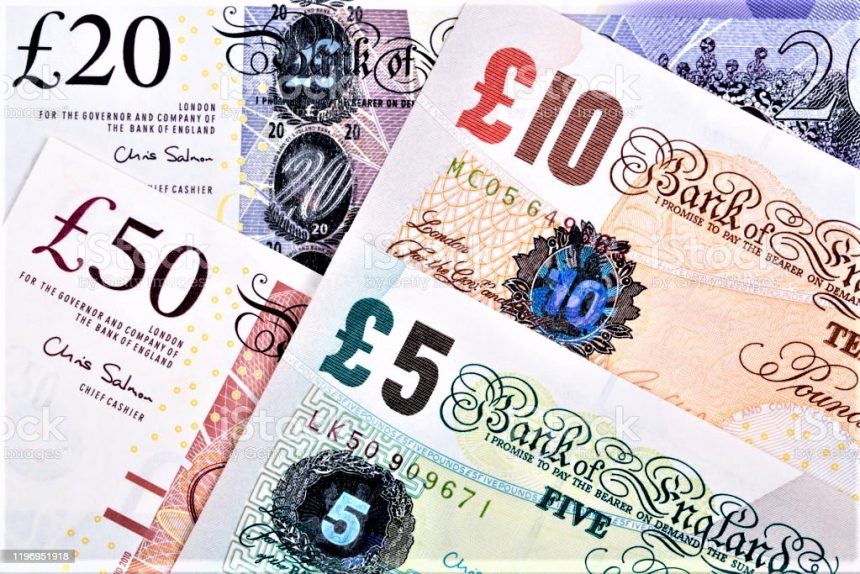Middle East Escalation Sparks Broad Risk Aversion
The British Pound (GBP) plunged sharply on Friday as global markets recoiled in response to rising geopolitical tensions in the Middle East. The sell-off in the Pound was most evident against the US Dollar (USD), with the GBP/USD pair falling to near 1.3530 — its lowest level in several weeks — as investors fled riskier assets in favor of traditional safe havens like the Greenback.
The catalyst behind the latest wave of risk aversion was Israel’s announcement of “Operation Rising Lion,” a military campaign targeting Iranian nuclear facilities and military sites. Israeli Prime Minister Benjamin Netanyahu declared that the strikes designed to halt Iran’s alleged nuclear weapons development. The Israeli Defense Ministry confirmed that multiple targets across northeastern Tehran, including key enrichment facilities in Natanz, were hit.
Pound Struggles Amid Global Flight to Safety
Investors’ appetite for risk soured significantly as the Middle East conflict raised fears of broader regional destabilization. While safe-haven assets like the US Dollar, Swiss Franc (CHF), and Japanese Yen (JPY) benefited, the British Pound fell across the board. According to Friday’s FX heat map, GBP was the weakest among the major currencies, falling 0.44% against the USD, 0.34% against the Euro (EUR), and 0.16% against the Japanese Yen (JPY).
Although the Australian and New Zealand Dollars posted deeper declines due to their higher beta and exposure to commodity flows, the Pound remained under pressure as traders repriced geopolitical risk and its economic fallout.
US Dollar Index Recovers Strongly
The US Dollar Index (DXY) surged 0.45% to 98.30 by European midday trading on Friday, recovering sharply from Thursday’s three-year low of 97.60. Investors favored the US Dollar as a hedge against global volatility. Adding to the Greenback’s appeal was stronger-than-expected macroeconomic data from the US earlier in the week, including modest gains in Producer Price Index (PPI) inflation and a resilient labor market.
Further, US President Donald Trump issued a series of posts on Truth Social endorsing Israel’s actions and asserting that “Iran cannot have a nuclear bomb,” signaling firm geopolitical alignment. Although the White House clarified that the US had no direct involvement in the strikes, the administration confirmed it was in touch with both Israeli and Iranian officials, seeking to de-escalate the situation.
UK Economic Data Adds to Pound Woes
The Pound’s woes were further deepened by a string of disappointing economic indicators from the United Kingdom. Earlier in the week, the Office for National Statistics (ONS) revealed that:
- The UK Unemployment Rate rose to 4.6% in the three months to April, marking the highest level since July 2021.
- The UK economy contracted by 0.3% in April, a sharper decline than analysts had expected.
- Business investment and industrial production weakened, especially in the manufacturing sector, which saw a notable downturn.
These soft economic signals have dented expectations for any further monetary tightening by the Bank of England (BoE) and raised the possibility of a sooner-than-expected dovish pivot.
BoE Expected to Hold Rates, But Caution May Persist
The BoE set to announce its latest monetary policy decision on Thursday, with widespread expectations that the central bank will hold its benchmark rate at 4.25%. The central bank has previously signaled a “gradual and cautious” path toward easing, but recent data may force officials to re-evaluate the timing and magnitude of such adjustments.
Weak labor market dynamics, slowing consumption, and fiscal tightening especially in the form of increased National Insurance (NI) contributions from employers expected to dampen near-term economic momentum. Some economists argue that any further delay in policy loosening could exacerbate downside risks.
Wednesday’s UK Consumer Price Index (CPI) release for May will be a critical input in shaping near-term BoE expectations. Analysts are forecasting a further moderation in headline inflation, which could give policymakers more breathing room to consider rate cuts by the end of the year.
Federal Reserve Also Expected to Stand Pat
The Federal Reserve will hold its policy meeting a day earlier, on Wednesday, with analysts projecting no change in interest rates. The Fed’s benchmark rate currently in the range of 4.25% to 4.50%, and the central bank widely expected to maintain a holding pattern until more clarity emerges on inflation and fiscal dynamics.
Markets will be watching the dot plot closely for signs of future rate cuts. According to the CME FedWatch Tool, markets are currently pricing in two rate cuts of 25 basis points each by year-end, with the first cut expected in September.
President Trump’s recent trade measures, including expanded tariffs on steel-derived products and China’s restrictions on rare earth exports, have injected additional uncertainty into the inflation outlook. These developments have made Fed officials increasingly cautious in their forward guidance.
Trade Developments Add Complexity to Outlook
Beyond the Middle East conflict, US-China trade tensions have reemerged as a potential headwind for global markets. Trump’s administration announced 55% tariffs on selected Chinese imports, while China retaliated by limiting rare-earth export licenses for US companies.
The Pound Sterling, due to London’s role as a global financial hub, remains particularly sensitive to global risk shocks and trade uncertainty. As such, developments on the trade front could continue to influence GBP/USD valuations in the coming weeks.
Pound Technical Outlook: Bears in Control
Technically, the GBPUSD pair has broken below key short-term support at 1.3580, confirming a bearish bias. The next critical level lies at 1.3450, followed by a psychological support area near 1.3400.
Momentum indicators such as the Relative Strength Index (RSI) and Moving Average Convergence Divergence (MACD) flashing oversold signals, but unless risk sentiment improves or key data surprises to the upside, any rebound likely to be limited.
Why is the British Pound falling right now?
Pound is under pressure due to a combination of factors:
- Rising geopolitical tensions between Israel and Iran, prompting risk aversion.
- Weak UK economic data, including higher unemployment and negative GDP growth.
- Expectations that the Bank of England will keep interest rates steady and possibly shift dovish.







